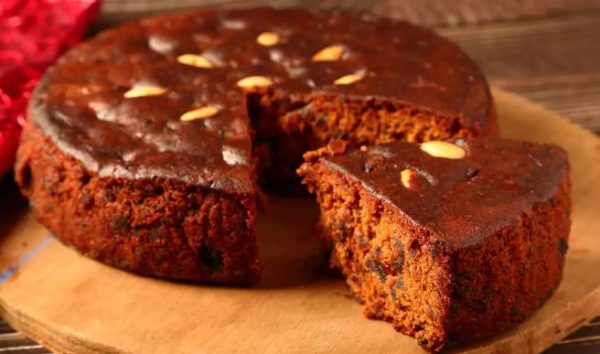
As Christmas approaches, the aroma of freshly baked plum cakes fills the air, and each bite is a nostalgic journey into the heart of this festive season. Beyond the delightful taste, the history of plum cakes is a fascinating tale woven into the fabric of Christmas traditions.
Well, do you know the story behind this unmissable Christmas special? Well, here it is.
The porridge-like dish
Plum cake traces its origins to medieval England, where a fasting tradition preceded Christmas.
This practice aimed to prepare the body for the festive indulgence on Christmas Day. On Christmas Eve, a porridge-like dish, considered the precursor to plum cake, was prepared. This porridge featured dried fruits like plums or prunes, oats, spices, and honey.
Evolving, the recipe saw the substitution of oats with flour, and the addition of eggs and butter in the 16th century. The intricate process involved tying the batter in a muslin cloth and boiling it for hours, resulting in a dense, fudge-like structure. Households with ovens transitioned to proper baking. The luscious topping for the cake or pudding was created a few days before Christmas and saved for the special day, served upside down after the meal. The name “plum cake” is attributed to the common practice of referring to raisins and currants as “plums” in England. Some theories suggest the association with the original porridge dish, which featured dried plums as a key ingredient.
The history of cake mixing
Just like plum cake, the history of Christmas cake mixing is also an interesting story. Originating in Europe, particularly in England, this practice has evolved into a festive and joyous prelude to the holiday season. In medieval England, a custom known as “stir-up Sunday” marked the last Sunday before Advent, which is five weeks before Christmas. Families gathered to stir and mix the ingredients for Christmas fruitcakes, puddings, and mincemeat. The name “stir-up Sunday” is derived from the opening words of the Book of Common Prayer’s collect for that day: “Stir up, we beseech thee, O Lord, the wills of thy faithful people.”
As part of the cake-mixing ritual, family members and sometimes even close friends would take turns stirring the mixture in a clockwise direction, making a wish with each stir. The ingredients typically included a variety of dried fruits, nuts, spices, and sometimes spirits like brandy or rum. This communal activity symbolized unity, good fortune, and the anticipation of the joyous Christmas celebrations to come.
Over time, this tradition spread to various parts of the world, adapting to local customs and flavors. Today, cake-mixing events are not only a cherished family activity but have also become popular in hotels, bakeries, and communities worldwide, bringing people together in the spirit of Christmas joy and camaraderie.
- 1 cup all-purpose flour
- 1/2 cup unsalted butter, softened
- 1/2 cup granulated sugar
- 2 large eggs
- 1/4 cup milk
- 1 teaspoon baking powder
- 1/2 teaspoon vanilla extract
- 1/2 teaspoon cinnamon powder
- 1/4 teaspoon nutmeg powder
- A pinch of salt
- 1 cup mixed dried fruits (raisins, currants, chopped dates, etc.)
- /2 cup chopped nuts (almonds, walnuts, or any of your choice)
Instructions:

